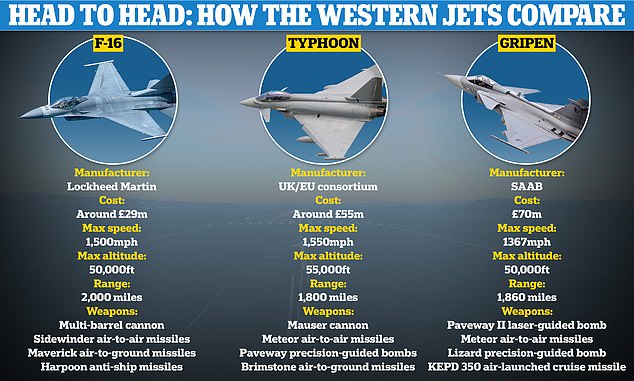Visiting London on Wednesday, Ukrainian President Volodymyr Zelensky urged the UK to supply him with modern fighter jets, telling an audience at Westminster Hall: “We have freedom.” Give us wings to protect it.’
Boris Johnson has been the most voluble supporter of the idea of handing Britain’s fleet of more than 100 RAF Typhoons to Ukraine, but the idea has been met with skepticism by military experts.
JUSTIN BRONK, a researcher at the Royal United Services Institute in London, is among the many critics of the proposal.
Below, he explores its many drawbacks and explains why providing your pilots with “generic” training could be a much better option.
It also examines how upgrading Ukraine’s air force could play a key role in helping the country overcome Vladimir Putin’s illegal invasion.
Prime Minister Rishi Sunak has publicly announced a UK training program for Ukrainian fighter pilots.
He also called on the Ministry of Defense to study options for providing RAF aircraft to Ukraine.
However, this is a late addition and the original goal of the announced program was to lay the foundation for faster retraining of Ukrainian fighter pilots on other NATO types such as the F-16 or Gripen rather than training them for operate UK aircraft such as the Eurofighter. Typhoon.
The UK’s offer to provide generic training to NATO is of enormous value.
There are many conceptual and technical differences between Soviet-made aircraft such as the Mig-29 and Su-27 that Ukrainian pilots are accustomed to flying, and Western fighters such as the F-16.
They were designed to play very different doctrinal roles, according to different tactics and using different weapons systems.
For example, in a Soviet-designed cockpit there are usually more instruments, switches, buttons and dials, but each one has a fairly simple function.
In contrast, most Western cockpits are much “cleaner” in terms of having fewer switches and dials, and more area dedicated to multi-function displays.
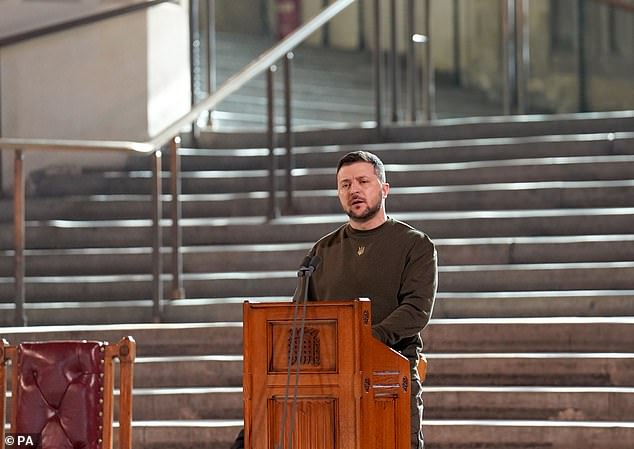
Ukraine’s President Volodymyr Zelensky has urged the UK to provide him with modern fighter jets, telling an audience at Westminster Hall: “We have freedom.” Give us wings to protect it’
However, most switches and buttons have a wide range of different potential functions depending on what mode the aircraft is in, what weapon is selected, what sensor modules are equipped, etc.
The Western cockpit layout therefore presents a steeper learning curve, but ultimately allows for greater tactical flexibility and a lower cockpit workload once mastered.
Additionally, Soviet-made fighters require careful flying and monitoring of engines and systems to ensure safety and effectiveness.
Modern Western fighters, by contrast, are much simpler and easier to fly than traditional Soviet-made aircraft, with worry-free flight control and management systems.
This means that it will be comparatively easy to train already qualified Ukrainian fighter pilots to fly Western aircraft, but the main task will be to train them to master sensors, tactics and weapons to be effective in combat.
Most of these differences in the ‘human-machine interface’, or in simple terms, how information is presented to the pilot and he controls the aircraft and weapons, can be taught without the need to fly Western aircraft or use complex flight simulators. full fidelity.
Modern commercial military flight simulators, such as Digital Combat Simulator, can allow pilots to learn how the systems, sensors and weapons of an aircraft such as the F-16C or F/A-18C operate, while retaining a level of abstraction on the detailed behavior of sensors or weapons. for security reasons.
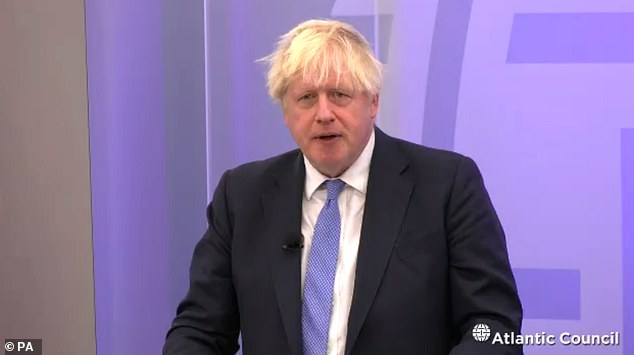
Boris Johnson has been the most voluble supporter of the idea of handing Britain’s fleet of more than 100 RAF Typhoons to Ukraine, but the idea has been met with skepticism.
When combined with Representative Throttle and Stick (HOTAS) controllers and high-resolution virtual reality headsets, which are also commercially available, Ukrainian pilots can gain a significant degree of familiarity with the cockpits and systems of Western fighters without needing to use real devices. UK aircraft or full fidelity simulator facilities.
When combined with RAF-qualified flight instructors, these virtual training aids are likely to be a powerful tool in preparing Ukrainian fighter pilots not only to be familiar with the cockpits of Western fighter aircraft.
Even more importantly, they will allow them to learn and practice the tactics, techniques and procedures used by the RAF for air-to-air and air-to-ground combat with Western weapons.
This approach should mean that conversion training should be much faster and more effective once an agreement is reached to supply a Western fighter from other NATO partners.
On the other hand, attempting to supply some of the older RAF Tranche 1 Typhoons will require in-depth training for Ukrainian pilots through the UK’s official pilot training system, which is currently suffering from very public shortcomings.
It would also require the UK to send the Ukrainian Air Force significant quantities of spare parts kits, qualified technicians and air-to-air weapons, which are in short supply due to systemic underfunding and constant deployments of the RAF’s Typhoon force. in combat operations and NATO Missions for over a decade.
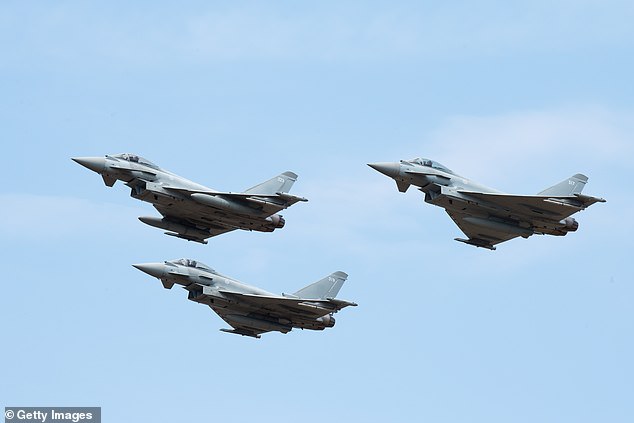
The Typhoon, pictured, could change the balance in warfare, but its design and advanced features make it difficult to maintain without the right equipment.
The Typhoon is also complex to maintain and is not designed to operate from the comparatively difficult and short, dispersed air bases that Ukraine needs to use to avoid being targeted by Russian missile attacks on the ground.
In other words, while it is a powerful air-to-air fighter and a multi-role strike aircraft in situations that do not involve a significant surface-to-air missile (SAM) or long-range precision strike threat, the Typhoon is not a ideal for Ukraine at the moment. Other types of NATO are more suitable.
The most likely candidates are the American F-16 or the Swedish Gripen; although significant practical and political challenges remain, most of which relate to how to set up maintenance equipment and trained personnel, as well as logistical support chains that allow them to operate sustainably in Ukraine.
The Gripen is best suited to Ukraine’s operational requirements today, as it is designed for low-altitude multi-role operations against Russian fighter and surface-to-air missile systems, and has a powerful internal electronic warfare system to assist in that role. .
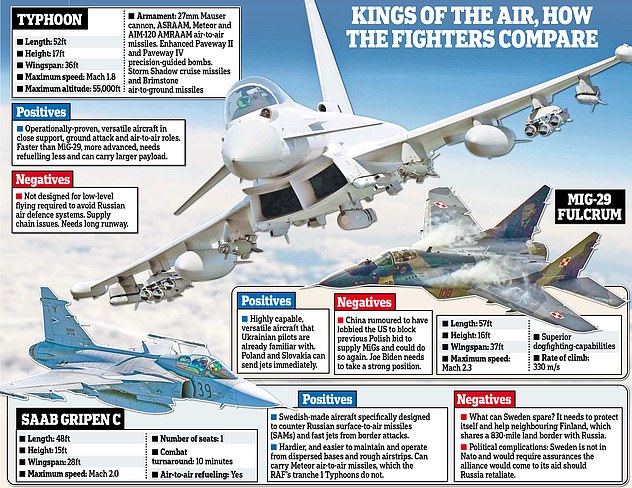
It is also much easier to support and maintain the austere dispersed air bases from which Ukraine will have to operate to avoid being attacked and destroyed by Russian missile attacks on the ground.
However, in the long term there are many more potential F-16s in the world that could be supplied and a larger logistics base.
Ultimately, the UK is right to offer training to Ukrainian fighter pilots that will allow them to more quickly and effectively transition to Western types such as the F-16 or Gripen once they are supplied.
Meanwhile, those Ukrainian pilots could reap some benefits from employing RAF air tactics as part of their repertoire on their current aircraft.
The RAF will also undoubtedly benefit from learning from the combat experience of Ukrainian pilots during their heroic first year defending their country against Russia’s brutal aggression.


